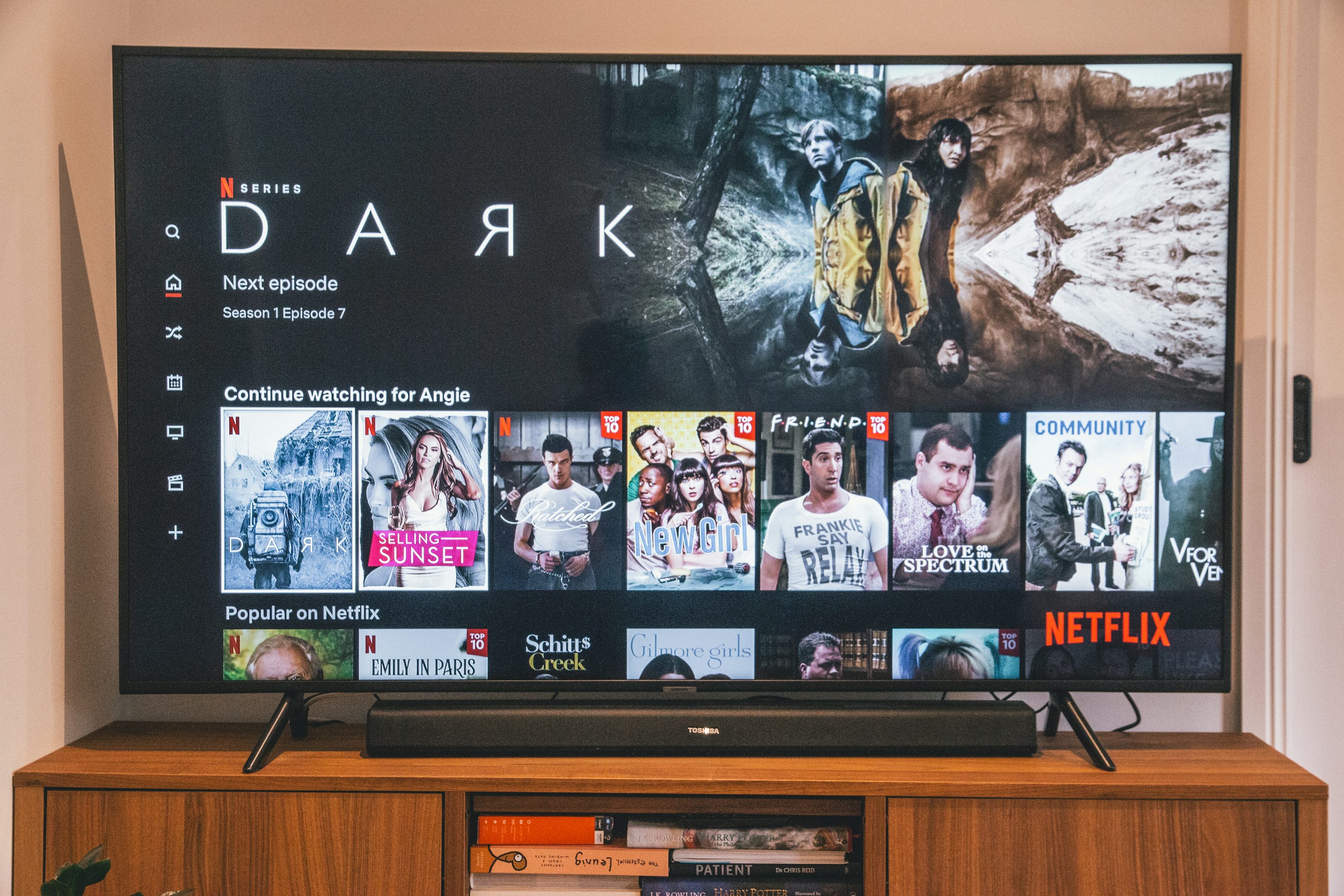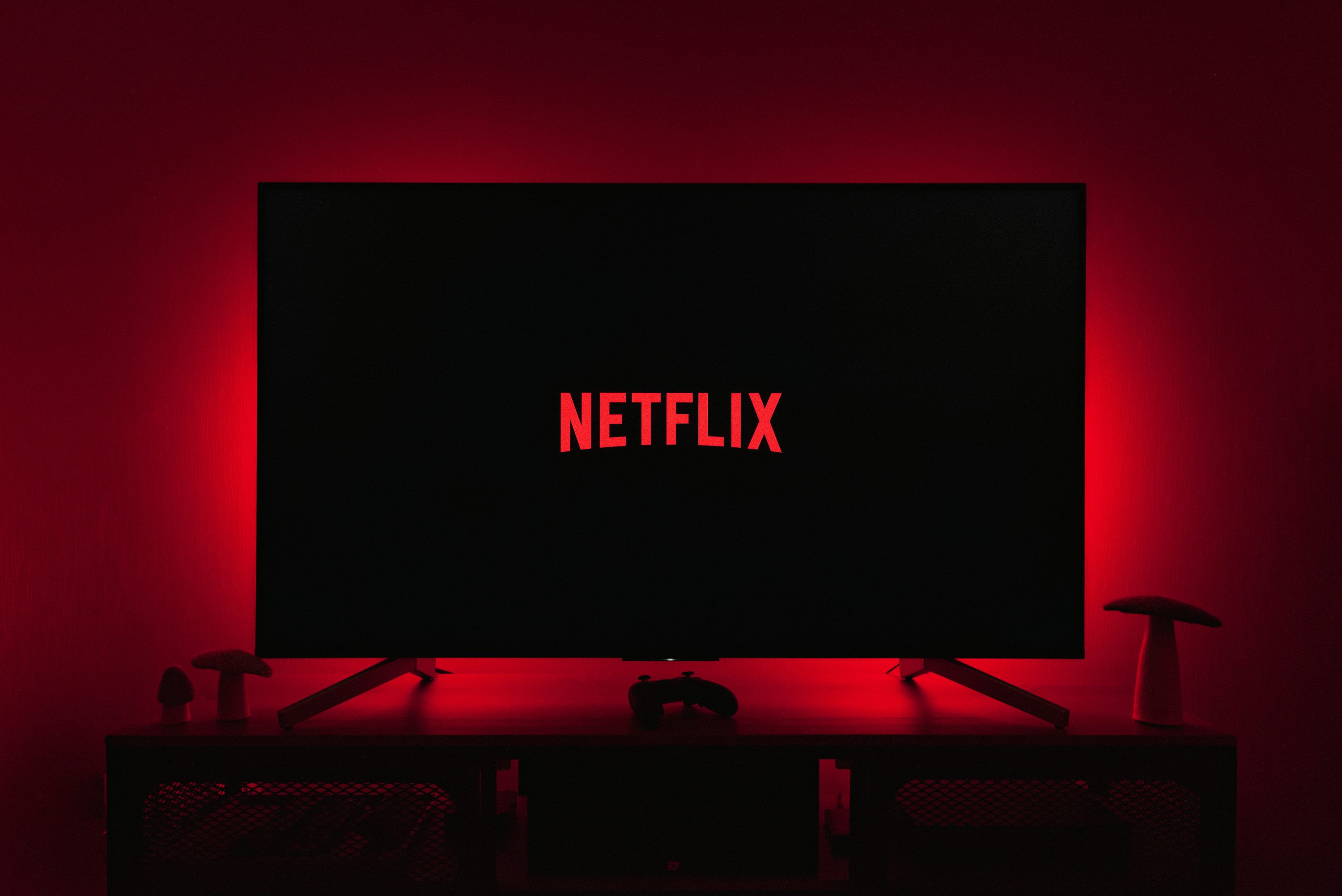
Pay Per View IPTV: The Ultimate Guide to On-Demand Entertainment
Pay Per View IPTV: The Ultimate Guide to On-Demand Entertainment
The world of television has evolved dramatically over the past decade. Gone are the days when viewers were restricted to cable packages with hundreds of channels they never watched. Today, Pay Per View IPTV services have revolutionized how we consume entertainment, offering unprecedented flexibility and control. But what exactly is Pay Per View IPTV, and why is it becoming increasingly popular among streaming enthusiasts?
Pay Per View IPTV combines the convenience of Internet Protocol Television with the flexibility of paying only for the content you actually want to watch. Unlike traditional subscription models that charge a flat monthly fee regardless of viewing habits, Pay Per View IPTV allows viewers to select and pay for specific events, movies, or shows. This approach eliminates waste and puts you in control of your entertainment budget.
In this comprehensive guide, we’ll explore everything you need to know about Pay Per View IPTV services, from how they work to their advantages over traditional cable packages. Whether you’re a sports enthusiast looking to catch the next big fight, a movie buff seeking the latest releases, or simply someone tired of paying for channels you never watch, this article will help you understand if Pay Per View IPTV is right for you.
What Is Pay Per View IPTV and How Does It Work?
Pay Per View IPTV represents a significant shift in how content is delivered and consumed. But what exactly sets it apart from traditional television services? At its core, IPTV (Internet Protocol Television) delivers television content over internet protocols rather than through traditional satellite or cable formats. The “Pay Per View” component means you only pay for the specific content you choose to watch.
Unlike conventional cable subscriptions that require you to purchase bundles of channels, Pay Per View IPTV operates on a more flexible model. You select individual events, movies, or shows that interest you and pay only for those selections. This content is then streamed directly to your device through your internet connection, eliminating the need for specialized hardware beyond what you likely already own.
The technology behind Pay Per View IPTV is surprisingly straightforward. Your selected content is broken down into data packets and sent through the internet to your viewing device. These packets are then reassembled to create the seamless viewing experience you enjoy. This process happens almost instantaneously, providing high-quality streaming without the delays or buffering issues that plagued early streaming services.
One of the most appealing aspects of Pay Per View IPTV services is their compatibility with various devices. Whether you prefer watching on your smart TV, computer, tablet, or smartphone, you can access your purchased content anywhere with an internet connection. This multi-device functionality makes it incredibly convenient for modern viewers who expect flexibility in their entertainment options.
The payment structure is equally straightforward. Rather than committing to monthly subscriptions, you simply pay for what you want to watch when you want to watch it. This can be particularly beneficial for occasional viewers or those with specific interests like sporting events or new movie releases. Many providers offer secure payment gateways that make transactions quick and hassle-free.
Benefits of Choosing Pay Per View IPTV Over Traditional Cable
The shift from traditional cable to Pay Per View IPTV represents more than just a technological evolution—it’s a fundamental change in how we approach entertainment. But what tangible benefits does this change bring to the average viewer? Let’s explore the advantages that have made many households cut the cord and embrace this flexible viewing option.
Cost efficiency stands as perhaps the most compelling reason to switch. Traditional cable packages often force consumers to pay for dozens or even hundreds of channels they never watch. With Pay Per View IPTV, your entertainment budget goes exclusively toward content you actually enjoy. For many households, this targeted approach can result in significant monthly savings without sacrificing quality or variety.
Beyond the financial benefits, Pay Per View IPTV offers unparalleled flexibility. There are no contractual obligations tying you to a service for months or years. You can purchase content as your schedule and interests dictate, whether that means watching a major sporting event one weekend or a new movie release the next. This freedom from long-term commitments resonates with today’s consumers who value flexibility in all aspects of their lives.
- Pay only for what you actually watch
- No long-term contracts or commitments
- Access content across multiple devices
- High-definition streaming options
- Watch on your own schedule with on-demand availability
Content quality has also improved dramatically with modern IPTV services. Many Pay Per View options now offer content in HD, 4K, and even HDR formats, providing visual and audio experiences that rival or exceed traditional broadcasting. This quality improvement comes without the signal degradation issues that sometimes affect satellite or cable transmissions during adverse weather conditions.
Perhaps most importantly, Pay Per View IPTV puts you in control of your viewing experience. You decide what to watch and when to watch it, free from the constraints of broadcast schedules. This on-demand approach aligns perfectly with modern lifestyles where convenience and personalization are increasingly expected in all consumer services.
Popular Types of Content Available on Pay Per View IPTV
The content landscape for Pay Per View IPTV is remarkably diverse, catering to virtually every interest and preference. This variety has been instrumental in driving the platform’s growing popularity. While traditional television might limit viewers to scheduled programming, Pay Per View IPTV opens up a world of content available whenever you’re ready to watch.
Live sporting events represent one of the most significant draws for Pay Per View IPTV services. Major boxing matches, UFC fights, and championship games across various sports are regularly offered as premium Pay Per View events. For sports enthusiasts, this provides a way to catch must-see competitions without committing to expensive sports packages that include countless games they’ll never watch.
Beyond sports, new movie releases have found a comfortable home on Pay Per View IPTV platforms. In fact, some studios have begun releasing films simultaneously in theaters and on Pay Per View services, giving viewers the choice between the big-screen experience and the comfort of watching at home. This trend accelerated during the global pandemic and has remained a viable distribution method for many productions.
Special events and concerts have also migrated to Pay Per View IPTV. Major music artists, comedians, and performers now regularly offer exclusive concerts and performances through these platforms. This has democratized access to live performances that might otherwise be limited by venue capacity or geographic constraints.
The channel selection available through Pay Per View IPTV services continues to expand as well. Many providers now offer temporary access to premium channels, allowing viewers to sample content before deciding whether it’s worth purchasing. This “try before you buy” approach represents yet another advantage over traditional cable packages where viewers are often locked into channel bundles.
Educational content, documentaries, and specialized programming have also found their audience through Pay Per View IPTV. From masterclasses taught by industry experts to in-depth documentaries on niche subjects, these platforms provide access to content that might never find its way to broadcast television due to limited mainstream appeal.
How to Set Up Pay Per View IPTV on Different Devices
Setting up Pay Per View IPTV is remarkably straightforward, regardless of which device you prefer for viewing. The process has been streamlined over the years to accommodate users with varying levels of technical expertise. Whether you’re tech-savvy or just beginning to explore digital streaming options, you’ll find that getting started with Pay Per View IPTV requires minimal effort.
For smart TV users, the setup process typically begins with downloading the appropriate application from your TV’s app store. Most major Pay Per View IPTV providers have dedicated apps for popular smart TV brands like Samsung, LG, Sony, and others. Once installed, you’ll need to create an account or sign in with your existing credentials. The app will guide you through the process of browsing available content and completing purchases.
If you prefer watching on a computer or laptop, the process is even simpler. Most Pay Per View IPTV services are accessible through web browsers, eliminating the need to download additional software. Simply navigate to the provider’s website, create an account if you don’t already have one, and you’ll gain immediate access to their content library. Browser-based viewing offers the advantage of not requiring any specialized equipment beyond what you already use daily.
Mobile devices offer perhaps the most convenient way to access Pay Per View IPTV content. By downloading the provider’s app from the Apple App Store or Google Play Store, you can transform your smartphone or tablet into a portable entertainment center. These apps are typically optimized for touch interfaces and smaller screens, ensuring a seamless viewing experience even on compact devices.
For those who prefer watching on traditional television sets without smart capabilities, streaming devices like Roku, Amazon Fire Stick, or Apple TV bridge the gap perfectly. These affordable devices connect to your TV’s HDMI port and provide access to various streaming services, including Pay Per View IPTV platforms. The setup process involves connecting the device to your home Wi-Fi network and downloading the relevant apps.
One of the greatest advantages of multi-device compatibility is the ability to start watching content on one device and continue on another. Many Pay Per View IPTV services synchronize your viewing progress across platforms, allowing you to begin a movie on your TV and finish it on your tablet while traveling, for example.
Understanding Pricing Models for Pay Per View IPTV
The pricing structure of Pay Per View IPTV represents one of its most significant departures from traditional television services. Unlike the flat monthly fees associated with cable or satellite subscriptions, Pay Per View IPTV offers various pricing models designed to give consumers greater control over their entertainment spending. Understanding these different approaches can help you maximize value while minimizing costs.
The most straightforward pricing model is the pure Pay Per View approach, where you pay a one-time fee for specific content. This model is particularly common for major sporting events, new movie releases, and special performances. Prices typically vary based on the content’s popularity and exclusivity, with high-profile events commanding premium rates. The advantage here is complete transparency—you know exactly what you’re paying for and can make informed decisions about whether the content justifies the cost.
Some providers offer hybrid models that combine subscription elements with Pay Per View options. These services might provide a basic content library for a monthly fee while reserving premium or new-release content for additional one-time payments. This approach gives viewers access to a steady stream of content while still maintaining the flexibility to purchase special events as desired.
Credit-based systems represent another innovative pricing approach. With this model, viewers purchase credits that can be redeemed for various content options. Different types of content require different credit amounts, allowing for a flexible spending experience that still operates on a pay-as-you-go basis. This model often includes discounts for bulk credit purchases, rewarding more active viewers with better rates.
When evaluating pricing options, it’s important to consider hidden costs that might affect the overall value. Some services charge additional fees for HD or 4K streaming, while others might limit the viewing window for purchased content. Reading the fine print before committing to a purchase can help avoid unexpected charges or limitations.
It’s also worth noting that many Pay Per View IPTV services offer promotional discounts for first-time users or during special events. Taking advantage of these promotions can be an excellent way to test a service’s quality and content selection before making larger purchases. Some providers even offer free content samples to demonstrate their streaming quality and user experience.
Common Challenges and How to Overcome Them
While Pay Per View IPTV offers numerous advantages, users may encounter certain challenges that can impact the viewing experience. Fortunately, most of these issues have straightforward solutions that can quickly get you back to enjoying your content. Understanding these potential hurdles and how to address them can save considerable frustration and ensure smooth streaming.
Internet connectivity issues represent the most common challenge for Pay Per View IPTV users. Since content delivery relies entirely on your internet connection, insufficient bandwidth can lead to buffering, quality degradation, or complete streaming failures. The solution often involves upgrading your internet package to ensure sufficient speed—experts generally recommend at least 25 Mbps for HD streaming and 50+ Mbps for 4K content. Additionally, connecting your viewing device directly to your router via Ethernet rather than relying on Wi-Fi can significantly improve stability.
Device compatibility occasionally presents obstacles, particularly for users with older equipment. Not all streaming apps are available on every platform, and some older smart TVs may not support the latest streaming technologies. In these cases, investing in an external streaming device like a Roku, Amazon Fire Stick, or Apple TV can provide an affordable solution without requiring a complete TV upgrade. These devices regularly receive software updates that maintain compatibility with evolving streaming standards.
Payment processing issues occasionally arise with international services or when using certain payment methods. These can be particularly frustrating when they occur just before a highly anticipated event. Maintaining multiple payment options on your account and testing a small purchase well before an important event can help ensure smooth transactions when they matter most. Many services also offer customer support specifically for payment-related issues.
Content availability varies significantly between providers and regions due to licensing restrictions. Users sometimes discover that content advertised by a service isn’t actually available in their location. Using a reputable provider like IPTV Rapid with clear terms regarding regional availability can help avoid such disappointments. Before making a purchase, always verify that the specific content you’re interested in is available in your region.
Technical support quality differs dramatically between providers. Some offer comprehensive, responsive support while others provide minimal assistance. Before committing to a service for an important event, test their customer service responsiveness by asking pre-purchase questions. Providers with multiple support channels (chat, email, phone) and extended hours typically offer the best assistance when issues arise.
Legal Considerations and Choosing Legitimate Providers
The legal landscape surrounding IPTV services can be complex and varies significantly by region. As a consumer, understanding these considerations is crucial not only for legal compliance but also for ensuring you receive reliable, high-quality service. Legitimate Pay Per View IPTV providers operate within established legal frameworks, securing proper licensing for the content they distribute.
Copyright infringement represents the primary legal concern with IPTV services. Unauthorized providers often offer suspiciously low prices for access to premium content because they’re broadcasting this material without paying the required licensing fees. While the initial savings might seem attractive, these services frequently suffer from poor reliability, especially during high-demand events. More importantly, using such services may potentially expose viewers to legal liability depending on local regulations.
Legitimate providers distinguish themselves through several key characteristics. They maintain transparent business operations with clearly identified ownership and physical business addresses. Their terms of service and privacy policies are comprehensive and accessible. They secure proper licensing agreements with content creators and distributors, which is often reflected in their pricing structure—if a deal seems too good to be true, it likely involves unauthorized content distribution.
When evaluating a provider’s legitimacy, look for established payment processing through recognized financial institutions. Reputable services use secure payment gateways and provide proper receipts for all transactions. They typically offer multiple payment options through mainstream financial services rather than insisting on cryptocurrency or other less traceable payment methods.
Customer protection policies represent another indicator of legitimate operations. Services that offer clear refund policies for technical failures or content unavailability demonstrate confidence in their service quality and commitment to customer satisfaction. These policies should be clearly stated and easily accessible before you make any purchases.
If you’re uncertain about a provider’s legitimacy, conducting some basic research can provide valuable insights. Look for reviews from established technology publications rather than relying solely on testimonials published on the provider’s website. Check for any history of legal challenges or consumer complaints through consumer protection agencies. Legitimate providers generally maintain a positive reputation within the industry and with their customer base.
The Future of Pay Per View IPTV and Emerging Trends
The Pay Per View IPTV landscape continues to evolve rapidly, with technological advancements and changing consumer preferences driving innovation. Understanding these emerging trends provides insight into how these services will likely develop in the coming years and how viewers can position themselves to benefit from these changes.
Enhanced content quality represents one of the most significant ongoing developments. While HD streaming has become standard, 4K content is increasingly common, and some providers are already experimenting with 8K broadcasts for premium events. Additionally, advanced audio formats like Dolby Atmos are enhancing the immersive quality of home viewing. These improvements require greater bandwidth and more sophisticated equipment, but they’re gradually becoming accessible to mainstream audiences.
Artificial intelligence is revolutionizing content discovery within Pay Per View IPTV platforms. Advanced recommendation algorithms analyze viewing habits to suggest relevant content, making it easier to discover events and shows aligned with your interests. This personalization extends to advertising as well, with targeted promotions replacing the generic ads associated with traditional broadcasting. The result is a more tailored viewing experience that maximizes the value of your entertainment time and budget.
Interactive features are increasingly being integrated into Pay Per View events. Viewers can access multiple camera angles during sporting events, participate in live polls during reality programming, or access supplementary information about documentaries without interrupting the main content. This interactivity transforms passive viewing into a more engaged experience that adds significant value to premium content.
The boundary between traditional Pay Per View and subscription services continues to blur. Many providers now offer hybrid models that combine subscription libraries with premium Pay Per View options. This convergence provides viewers with both consistent access to a broad content library and the flexibility to purchase special events or early-release content.
Virtual and augmented reality represent perhaps the most revolutionary frontier for Pay Per View IPTV. While still in early development stages, VR broadcasts of concerts and sporting events offer unprecedented immersion, creating the sensation of being physically present at live events. As VR technology becomes more affordable and comfortable for extended viewing, it could fundamentally transform how we experience premium content.
For consumers looking to stay at the forefront of these developments, maintaining flexibility is key. Rather than investing heavily in ecosystem-specific hardware, choosing devices and services that support open standards will likely provide the best long-term value. Additionally, following industry developments through technology news sources can help identify emerging trends before they become mainstream.
If you’re ready to explore the world of Pay Per View IPTV, contact IPTV Rapid today to learn more about their flexible options and premium content selection. Their knowledgeable team can guide you through the setup process and help you discover the perfect viewing solution for your entertainment needs.








